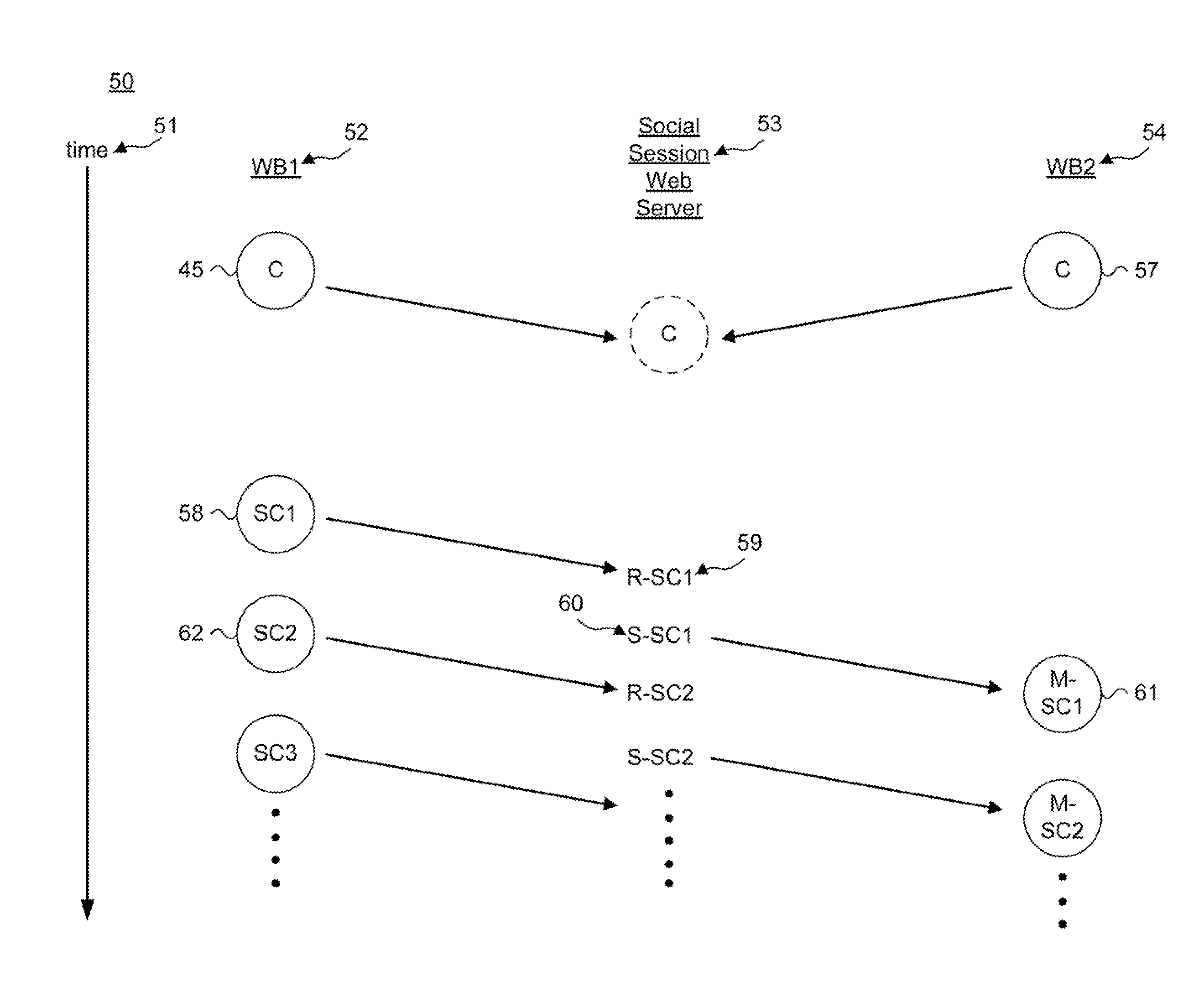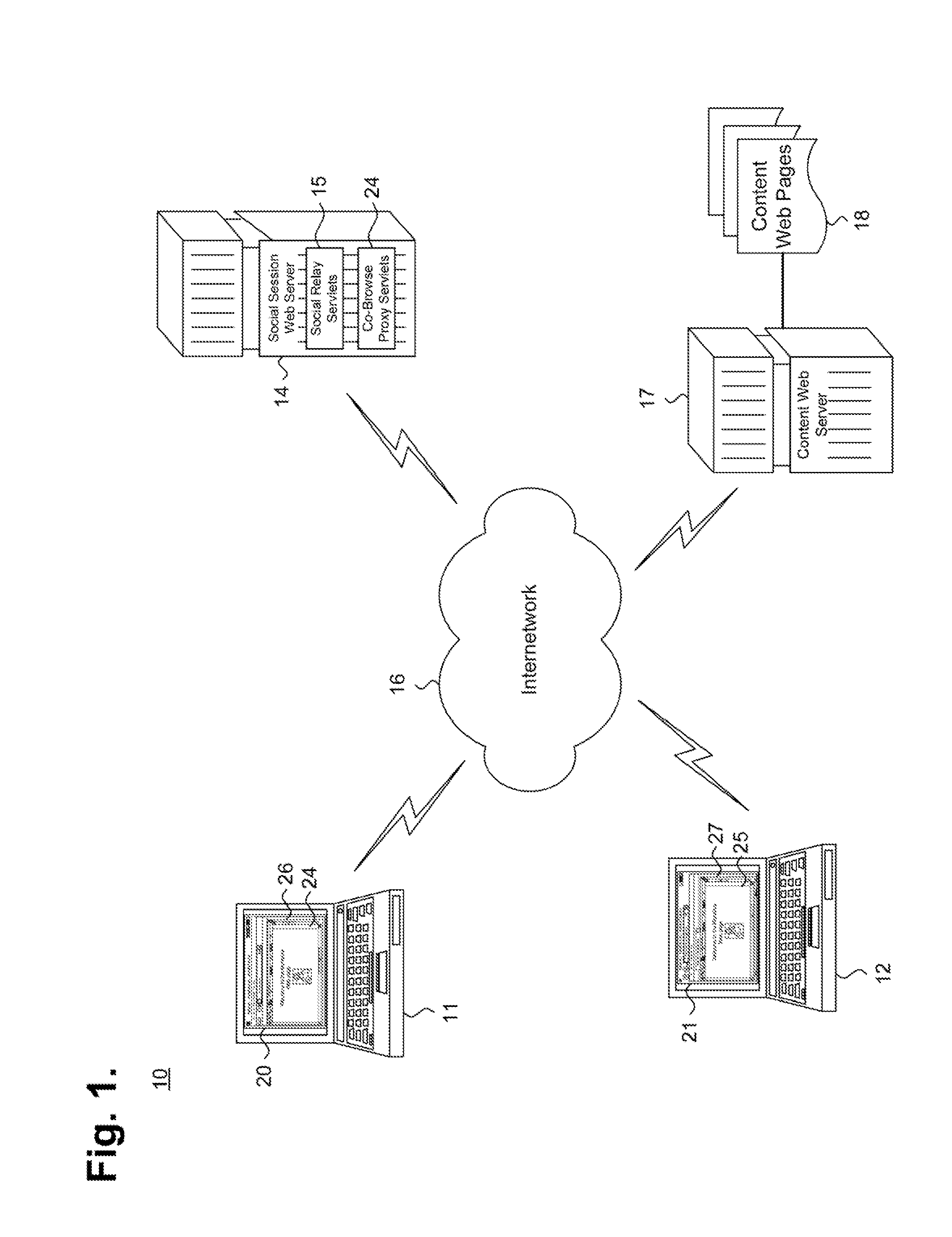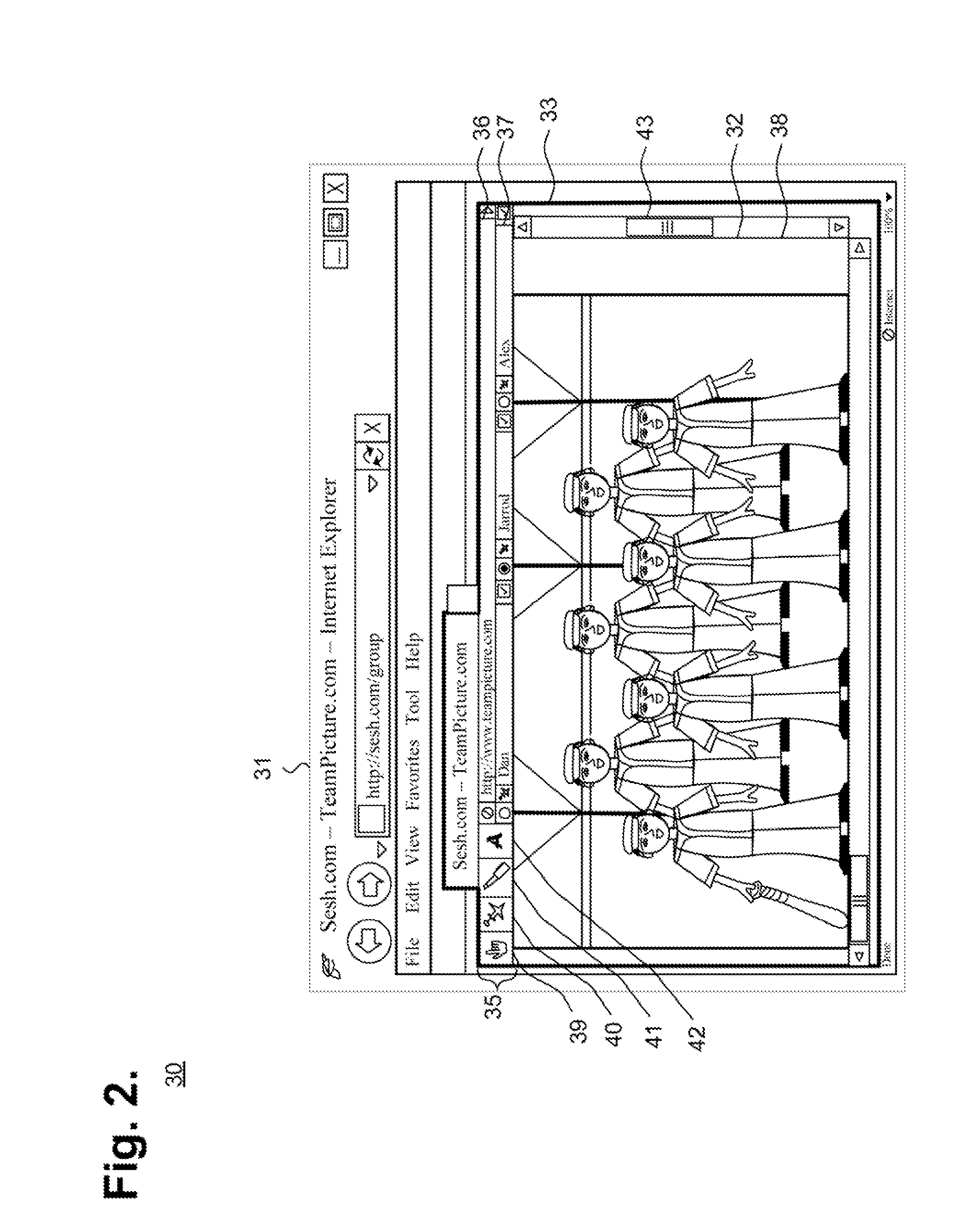A
system and method to provide visual social communication through co-browsing. Users participate in a social session by utilizing Web browsers running on separate computing devices, which are connected to a social session
Web server running the co-browse proxy servlet and social
relay servlet technologies described herein. Each Web browser loads social session code, which may be in the form of a social session
Web page. The social session code remains loaded in each Web browser throughout the social session. The social session code displays a viewport containing the users' desired
Web page content obtained from a
Web server located on the internetwork after being processed by the co-browse proxy servlet technology. The viewports are sized and positioned such that substantially similar portions of the same
Web page content are synchronously displayed in each viewport. Each user can make social changes such as free drawings or text annotations on a transparent
overlay located over his Web browser's viewport. Each social change is sent to social
relay servlets running on the social session
Web server, which coordinate the social session by transmitting, without
delay, the social change to the other Web browsers. Each receiving Web browser creates a
mirror image of the social change on a transparent
overlay located over the viewport which displays the content Web page. The social change may fade with time until no longer visible. All users in the social session have the ability to make social changes, navigate the
Web content displayed in the social viewport, and request and display other Web pages served by Web servers located on the internetwork. Each Web browser is assigned one or more identifiers such as name or color. Social changes, navigation actions,
scrolling actions and Web browser
sizing actions contain or generate corresponding identifiers which enable the users of each other Web browser to easily determine which Web browser is responsible for a particular action.
One embodiment provides a system and method for facilitating, visual social communication through co-browsing. A social session is established and includes a plurality of Web browsers. Each Web browser is loaded with social session code, which displays a social viewport. Substantially similar portions of
Web content are synchronously displayed in each social viewport. A social change is displayed on the Web content in the social viewport of one such Web browser. The social change is partitioned into at least one social change segment. Each social change segment is transmitted to each other of the Web browsers. Each social change segment is received and displayed in the other Web browsers, such that the social change is reproduced smoothly in the Web browsers as the social change is progressively created.
Conventional Web browsing; has remained a solitary activity. Web users have not had an efficient way to browse
the Internet together and to share their thoughts about the Web pages they are viewing. The embodiments herein enable a new way to communicate online, where users can share their ideas with other users in a social session by visually communicating by inserting social changes on synchronized displays of Web content. By providing commensurate viewports and
scrolling synchronization, the embodiments ensure that each user's view of the Web content remains the same throughout the social session, preventing
confusion. User self-governance is facilitated through a system of visual accountability, where each user and his actions are identified with visual cues. To ensure high ease of use and widespread
accessibility, the embodiments are performed exclusively through functionality native to standard Web browsers without plug-ins or downloads, and communication is performed through standard firewalls via the standard default ports for
Hypertext Transfer Protocol (HTTP) and
Hypertext Transfer Protocol over Secure Socket Layer (HTTPS).
 Login to View More
Login to View More  Login to View More
Login to View More 


